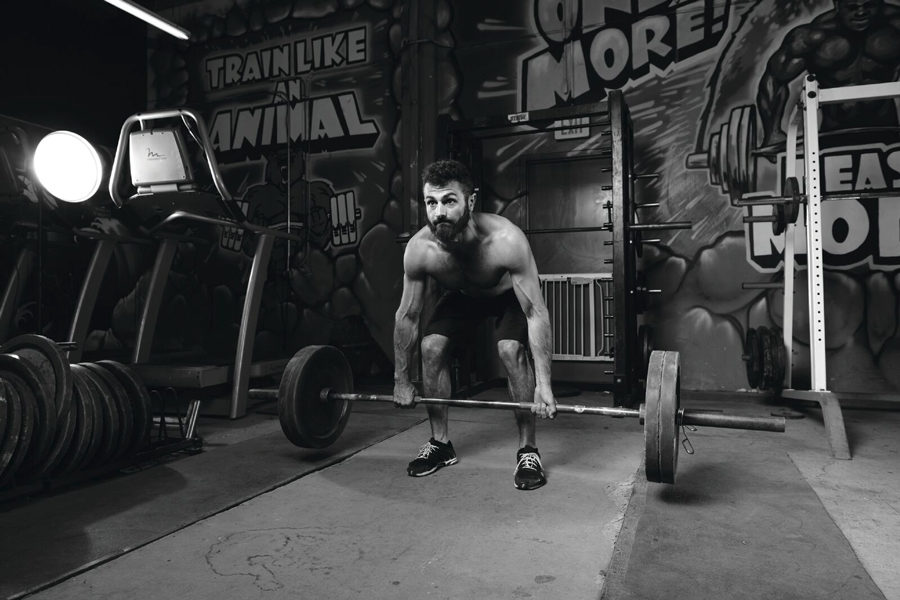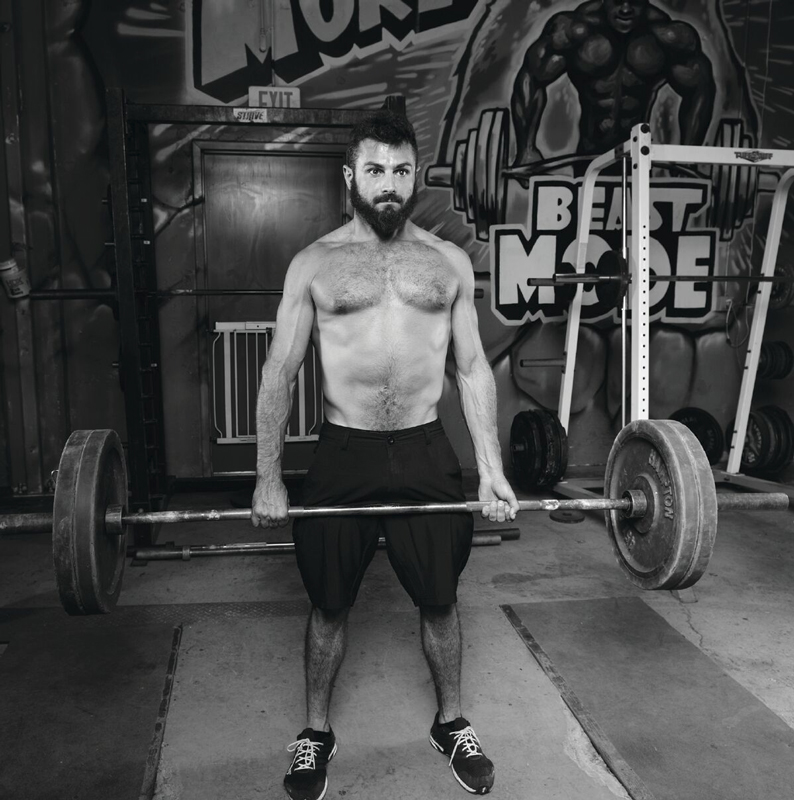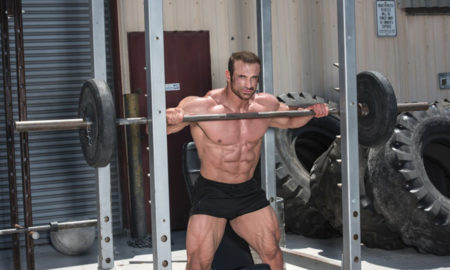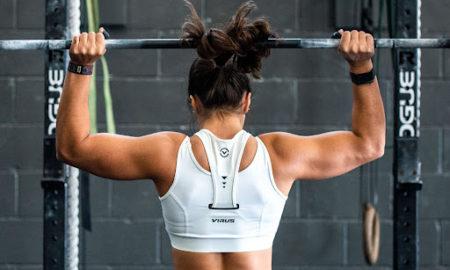

This isn’t some math problem. It’s your solution to build power and strength.
By Eddie Avakoff
What attracts me to 5×5 (not the cheeseburger, but the 5 sets x 5 reps training scheme) is that it’s the perfect balance of power and strength. Power refers to the speed of the lift: Force times distance, divided over time. Strength refers to the total amount of weight one can lift. In this 5×5 scheme, both attributes are products of the volume: 25 total reps, all near maximal effort, build strength. And, playing with such a low rep count during each set, helps develop power.
I know, to some, 5 reps is cardio, but in the grand scheme of things that’s a pretty low rep count. I feel this blend of strength and power training best serves performance athletes, as many sports (football, MMA, hockey, basketball, baseball) don’t just require sheer strength, but also the ability to produce speed (power) at the drop of a hat. Note: The 5×5 applies to all primary foundational lifts (squat, bench, deadlift and overhead press).
Different Approaches
There are many ways to approach a 5×5. For instance, each primary movement can be assigned a specific day: Monday Squat, Tuesday Overhead Press, Thursday Deadlift, etc. Not a bad approach, but unless I’m pursuing a strength goal (i.e. a powerlifting meet or strongman competition), I tend to avoid (body part/movement pattern) isolation and like to stick to whole body from training session to training session. Therefore, each day (for instance, Monday, Wednesday, Friday) I’ll perform squat, press (bench or overhead) and deadlift, 5×5 on each. That’s legs, push and pull.
But, there’s more to this program than just 5×5 squat, 5×5 press and 5×5 deadlift. After each movement pattern is completed, a secondary accessory exercise is performed for a 3×20. For example, after doing 5×5 squat, one would complete 3×20 leg press. After doing 5×5 bench press, try 3×20 on dips. And, after 5×5 deadlift, you could do 3×20 on cable rows. So in its entirety, one would have done six movements in a training day: Three foundational lifts (5×5) and three accessory lifts (3×20).
I like this program because each lifting session is full body (and certainly no neglect to leg training, which is generally most important for athletes). This program is also very simple to follow, something one can easily complete in any gym – barbell movements are as basic (and effective) as it can get. It’s a great strength program for two or three days a week in the gym.
Incorporating It Into Your Training
Maybe you can’t get to the gym every day, or perhaps you’re juggling weight training with another sport (which is why I say it’s great for performance athletes). I use this strength program in conjunction with mixed martial arts and it serves as a great asset to my power and muscular endurance while in the ring.
Here’s an example of a typical training week using this program:
Monday
Squat 5×5 / Leg Press 3×20
Bench Press 5×5 / Dip 3×20
Deadlift 5×5 / Pull-Up 3×20
Wednesday
Squat 5×5 / Walking Lunge 3×20
Overhead Press 5×5 / Handstand Push-Up 3×20
Deadlift 5×5 / Cable Row 3×20
Friday
Squat 5×5 / Hamstring Curl 3×20
Bench Press 5×5 / Incline Dumbbell Press 3×20
Deadlift 5×5 / Lat Pulldown 3×20
Honestly, even if you couldn’t get to the accessory movement (let’s pretend you just don’t have time one day), just the 5×5 on squat, bench and dead is plenty of weight training for the day. Having just become a new dad, I often find myself short on time and the simple 5×5 S-B-D is perfect for 60 minutes in the weight room.
However, when I have the time and, more importantly, the energy, (as I write this on three hours of sleep with the little one right beside me) the full 5×5 plus accessories is a butt-kicking program that bridges strength and power. It has served my strength throughout my MMA training, and is also my go-to program for periods of my life when I’m busy (also known as life happens).
Crafting A Plan
I’d like to add one final piece to the puzzle: A long-term plan. Typically, I try to abide by this 5×5 protocol for a good 10 to 12 weeks, slowly but surely increasing weight week by week. Then, after about three months, I’ll drop the weight slightly (usually to about the same weight that I started week one or two’s 5×5 with) and complete that given weight for 3×10. This not only serves as a much needed deload, but also reassures the significant strength gains received from the 5RM has now become the 10. I find it best to spend a solid two to three weeks playing with this deload.
Here’s an example of week-by-week progression:
Week 1: Top working 5×5 set: 225lb
Week 2: 235lb
Week 3: 240lb
Week 4: 245lb
Week 5: 245lb
Week 6: 250lb
Week 7: 255lb
Week 8: 260lb
Week 9: 265lb
Week 10: 265lb
Week 11: 270lb
Week 12: 275lb
Week 1: Deload 3×10: 225lb
Week 2: 230lb
Week3: 235lb

At this point, you can either spend another week sticking to the deload, or jump back onto the 5×5 protocol, starting at, or around, the weight you left off at. In the case of this example, I’d start at around 260 or 265 pounds.
As the summer has come to an end and the bulking seasons of fall and subsequently winter have begun, the pursuits of strength and power are at the forefront of many of our to-do lists. This is the perfect program to follow all fall and winter. And with all the attention to volume, one can rest assured that most mass gained will be lean (diet pending). Of course, conditioning is an entirely different topic we haven’t covered. Fortunately, there are still quite a few days left in the week to fit that in with this program.


















You must be logged in to post a comment Login